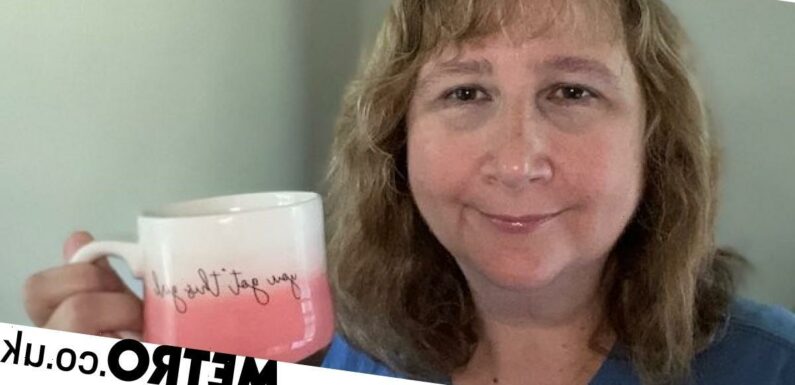
I’ll always remember the sound of the genetic counsellor’s voice as she broke the news.
‘You’ve tested positive for the BRCA2 gene,’ she said gently.
As she went on to explain that my results meant my chances of breast and ovarian cancer – and, to a lesser extent, melanoma and pancreatic cancer – were higher than normal, and of developing it younger, my head swam with shock.
I’d gone for testing initially because after watching my mother undergo gruelling breast cancer surgery and treatment, it terrified me that I might have to go through the same thing. If I did, I wanted to be prepared.
At first, I organised a private test, with 23andMe, and it showed I was negative. Though, I realised it only actually tested for three variants, not the numerous ones that I could be carrying.
So when my mother passed away in February 2018 from suspected ovarian cancer, I spoke to my doctor who agreed it was worth referring me for further examination.
I thought I was just being careful and, judging from how shocked I was now in October 2019, I clearly wasn’t expecting it to come back positive.
But now I knew I had an increased risk of cancer, what was I going to do with the information?
Always a planner, I immediately set up a BRCA Action Plan spreadsheet at home, listing everything I needed to do, appointments to make…
My first decision was easy. As a child-free, post-menopausal woman, in January 2020, I had my ovaries and fallopian tubes removed. Waking up knowing I’d taken action to protect myself was a huge relief.
The next bit was tougher. Did I want to remove my two perfectly healthy breasts?
Like most women, my figure and shape was a huge part of my identity and I struggled when I imagined myself losing that.
My doctor advised there were other options; that I could have more regular scans and check-ups in the hopes of catching any cancer cells early or have drug therapy that would lower my risk of developing cancer.
But as I thought about the reality of my situation, I realised if I was to be diagnosed with breast cancer, I’d likely need surgery anyway and as I was in my 50s, I was probably in the best shape possible to recover from that procedure now. If I was to wait another 10 or 20 years when I was diagnosed, it wouldn’t be so easy.
Also I worried about catching the cancer early enough. My mother went for mammograms every year but her breast cancer wasn’t detected until she found an irritation on her breast and had it checked out by her doctor. She still had to go through gruelling rounds of chemotherapy and radiotherapy, which exhausted her.
And although some people think of breast cancer as now being ‘survivable’, thousands of people still die with it every year. Did I really want to run that risk?
When I looked at the drugs I could take, they all came with potential side effects.
In the end, I felt, if I wanted to do everything I could to reduce my risk of developing cancer, there was only one option: Remove my breasts.
So I spoke with my doctor and arranged to have a double mastectomy and, at the same time, a reconstruction. They’d remove tissue from my tummy to rebuild my breasts. I was told I wasn’t a good candidate for nipple sparing, but that I could have them reconstructed and tattooed or even just tattooed.
An eight-hour operation with three surgeons – the breast surgeon and two plastic surgeons – it was going to be extremely tough on my body and once I’d decided to go ahead, I just wanted it over and done with.
So when I woke up from the operation, I just felt relieved. Relieved that my decision was made and that it was all over.
I felt battered and bruised by my surgery and it took me two days to get to my feet – but that just made me value my health even more and confirmed my decision was the right one. Since then, I’m far more mindful about what I eat and exercise more in an effort to boost my health.
Luckily, I was able to stay with my cousins once I was released from hospital and they took care of me during my recovery, making my food and doing my washing.
I’ve had to undergo further operations to reconstruct my breasts, but now, I’m happy with how I look.
Sadly, I have lost sensation in them, but that’s something I’m willing to sacrifice in order to take what control I can over my health and give myself the best chance of not developing cancer – and what that might entail.
When I tell people that I had both of my breasts removed, they’ll often gasp and tell me I’m brave. But I don’t really think of it like that. ‘I was just more scared of getting cancer,’ I’ll tell them honestly. ‘I just did what I could to reduce my risk.’
And that’s what I’ve done – reduce my risk. I haven’t removed it completely. Doctors have warned me there may still be a few remaining breast or ovarian cells left that could potentially become cancerous and I’ll still need to be monitored regularly.
But my risk has gone from being higher than other women’s to much lower and the worry and anxiety that it brought has gone.
And, for me, my ovaries and breasts were a small price to pay for that.
Do you have a story you’d like to share? Get in touch by emailing [email protected].
Share your views in the comments below.
Source: Read Full Article

